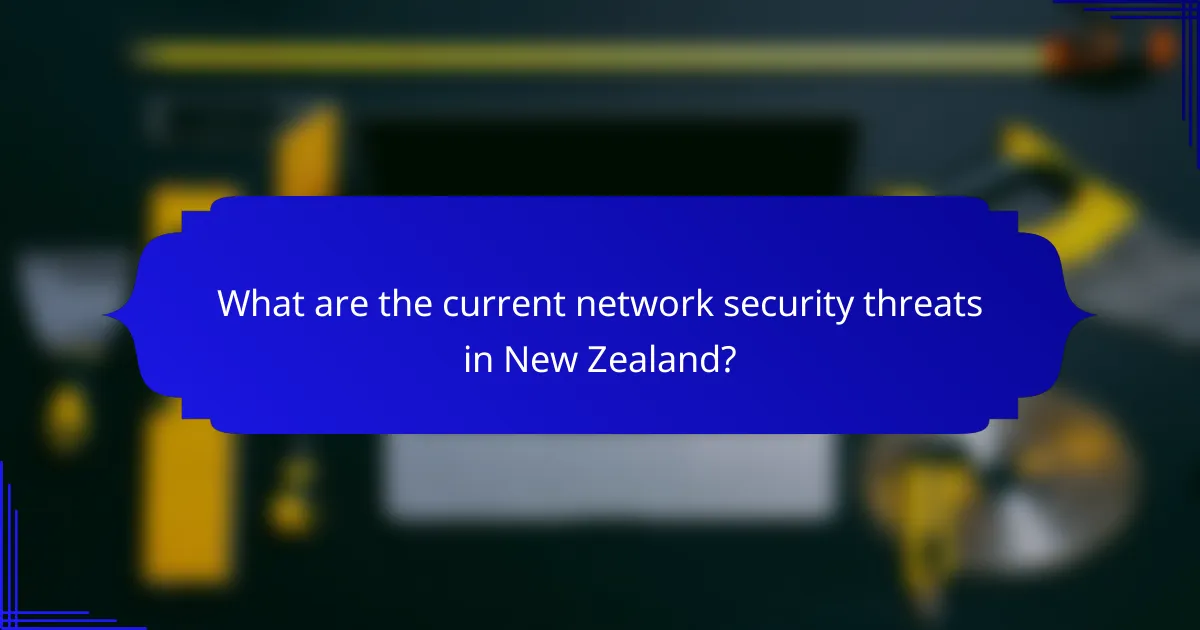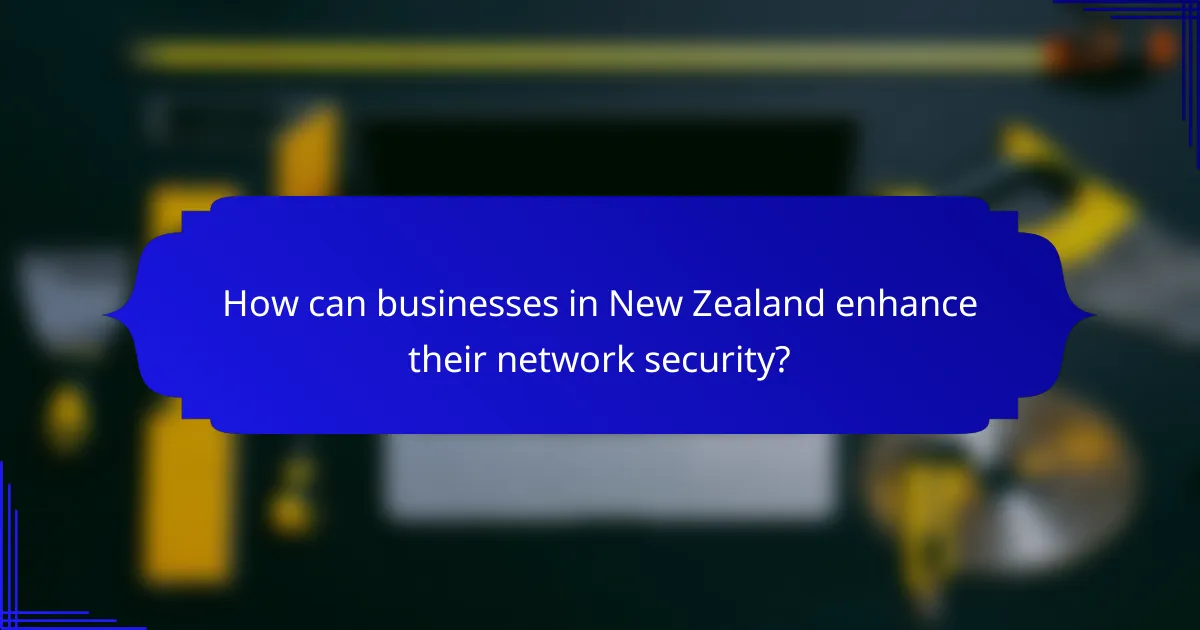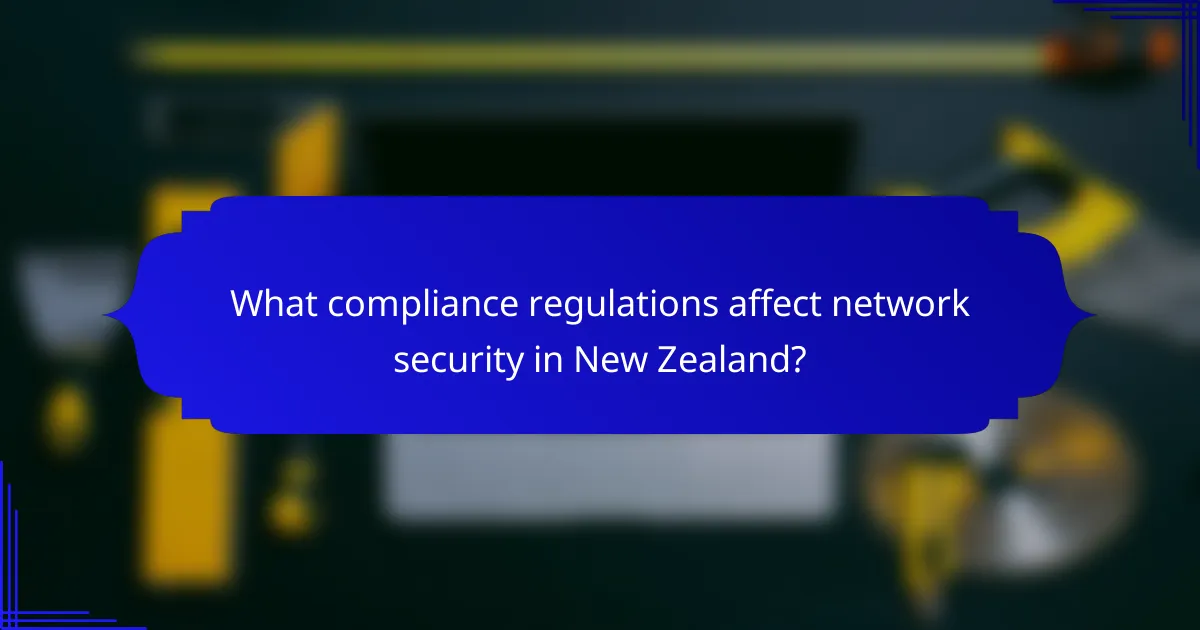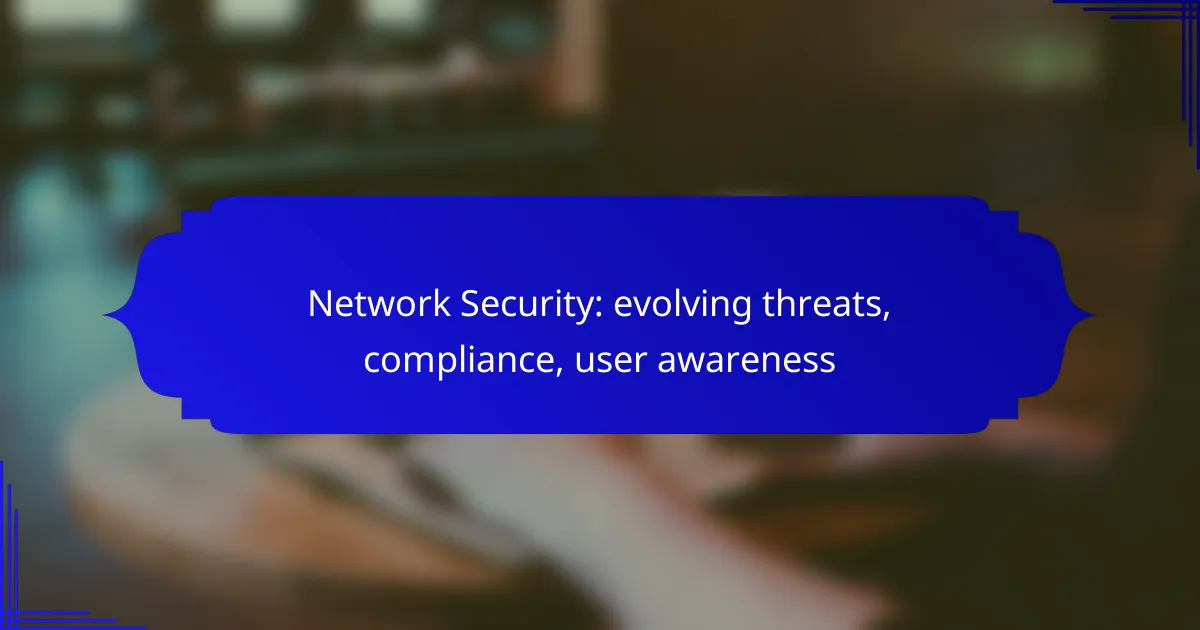As network security threats evolve, New Zealand faces increasing challenges such as ransomware, phishing, and IoT vulnerabilities that jeopardize data integrity and privacy. To combat these threats, businesses must adopt a multi-layered security approach, which not only includes technological defenses but also emphasizes user awareness and compliance with regulations like the Privacy Act 2020. By fostering a culture of security and adhering to established standards, organizations can better protect sensitive information and mitigate risks.

What are the current network security threats in New Zealand?
New Zealand faces several significant network security threats that can compromise data integrity and privacy. Key threats include ransomware attacks, phishing scams, insider threats, IoT vulnerabilities, and supply chain attacks, each requiring targeted strategies for mitigation.
Ransomware attacks
Ransomware attacks involve malicious software that encrypts a victim’s data, demanding payment for decryption. In New Zealand, these attacks have surged, targeting both businesses and public institutions, often leading to substantial financial losses and operational disruptions.
To protect against ransomware, organizations should implement regular data backups, maintain updated security software, and conduct employee training on recognizing suspicious activities. A proactive approach can significantly reduce the risk of falling victim to such attacks.
Phishing scams
Phishing scams are deceptive attempts to obtain sensitive information by masquerading as trustworthy entities. In New Zealand, these scams frequently occur through email and social media, tricking users into revealing personal data or login credentials.
To combat phishing, users should be trained to identify red flags, such as unusual sender addresses or urgent requests for information. Employing multi-factor authentication can also add an extra layer of security against unauthorized access.
Insider threats
Insider threats arise from employees or contractors who misuse their access to sensitive information, either intentionally or accidentally. This can lead to data breaches and significant reputational damage for organizations in New Zealand.
To mitigate insider threats, companies should enforce strict access controls, monitor user activity, and foster a culture of security awareness. Regular audits and employee training can help identify potential risks before they escalate.
IoT vulnerabilities
IoT vulnerabilities refer to security weaknesses in Internet of Things devices, which can be exploited to gain unauthorized access to networks. As IoT adoption grows in New Zealand, so does the risk associated with poorly secured devices.
To secure IoT devices, users should change default passwords, regularly update firmware, and segment IoT networks from critical systems. Implementing these practices can help minimize exposure to potential threats.
Supply chain attacks
Supply chain attacks target vulnerabilities in third-party vendors to compromise an organization’s network. In New Zealand, these attacks can disrupt operations and lead to data breaches, as seen in various high-profile incidents globally.
To defend against supply chain attacks, organizations should conduct thorough risk assessments of their vendors, enforce security standards, and establish incident response plans. Regularly reviewing vendor security practices can help mitigate risks associated with third-party relationships.

How can businesses in New Zealand enhance their network security?
Businesses in New Zealand can enhance their network security by implementing a multi-layered approach that includes firewalls, regular software updates, employee training, and intrusion detection systems. These strategies work together to protect sensitive data and maintain compliance with local regulations.
Implementing firewalls
Firewalls serve as a critical barrier between a trusted internal network and untrusted external networks. They monitor incoming and outgoing traffic based on predetermined security rules, blocking unauthorized access while allowing legitimate communication.
When selecting a firewall, consider options such as hardware firewalls for robust protection or software firewalls for individual devices. Regularly updating firewall rules and configurations is essential to adapt to evolving threats.
Regular software updates
Regular software updates are vital for maintaining network security, as they often include patches for known vulnerabilities. Keeping operating systems, applications, and security software up to date reduces the risk of exploitation by cybercriminals.
Establish a routine schedule for updates, ideally weekly or monthly, and automate the process where possible. This practice minimizes downtime and ensures that all systems are equipped with the latest security features.
Employee training programs
Employee training programs are essential for fostering a culture of security awareness within an organization. Regular training helps staff recognize potential threats such as phishing attacks and social engineering tactics, empowering them to act responsibly.
Consider implementing interactive training sessions and simulations to engage employees effectively. Providing ongoing education and resources can reinforce best practices and keep security top of mind.
Intrusion detection systems
Intrusion detection systems (IDS) monitor network traffic for suspicious activity and potential threats. They can alert administrators to unauthorized access attempts, enabling a swift response to mitigate risks.
Choose between network-based IDS, which analyze traffic across the entire network, or host-based IDS, which focus on individual devices. Regularly review alerts and logs to identify patterns and improve overall security posture.

What compliance regulations affect network security in New Zealand?
In New Zealand, several compliance regulations significantly impact network security, focusing on the protection of personal and sensitive information. Key regulations include the Privacy Act 2020, the Health Information Privacy Code, and the ISO/IEC 27001 standards, each addressing different aspects of data security and privacy management.
Privacy Act 2020
The Privacy Act 2020 governs how personal information is collected, used, and disclosed by organizations in New Zealand. It emphasizes the importance of safeguarding personal data and requires entities to implement reasonable security measures to protect this information from unauthorized access.
Organizations must ensure they have clear privacy policies and practices in place, including data breach notification procedures. Failure to comply can result in significant penalties and damage to reputation.
Health Information Privacy Code
The Health Information Privacy Code is a specific regulation that applies to health agencies and governs the handling of health information. It sets out 12 rules that health providers must follow to ensure the confidentiality and security of patient data.
Key considerations include obtaining consent for data sharing and ensuring that health information is stored securely. Organizations must regularly review their practices to remain compliant and protect sensitive health data effectively.
ISO/IEC 27001 standards
ISO/IEC 27001 is an international standard that provides a framework for establishing, implementing, and maintaining an information security management system (ISMS). Adopting this standard helps organizations systematically manage sensitive information and mitigate security risks.
To comply with ISO/IEC 27001, organizations should conduct regular risk assessments, implement security controls, and ensure continuous improvement of their information security practices. Certification can enhance credibility and demonstrate a commitment to data protection.

How can user awareness improve network security?
User awareness is crucial for enhancing network security as it empowers individuals to recognize and respond to potential threats effectively. By fostering a culture of vigilance, organizations can significantly reduce the risk of security breaches caused by human error.
Regular security training
Regular security training ensures that employees are informed about the latest threats and best practices in network security. Training sessions should cover topics such as password management, data protection, and recognizing suspicious activities. Aim for quarterly sessions to keep knowledge fresh and relevant.
Consider using a mix of formats, including workshops, online courses, and interactive quizzes, to engage employees effectively. This variety can cater to different learning styles and enhance retention of information.
Phishing simulation exercises
Phishing simulation exercises help employees identify and respond to phishing attempts in a controlled environment. By simulating real-world phishing attacks, organizations can assess employee responses and provide immediate feedback. This hands-on approach reinforces learning and builds confidence in recognizing threats.
Implement these exercises at least biannually to track improvements over time. Use metrics such as click rates and reporting rates to measure effectiveness and adjust training accordingly.
Clear communication protocols
Establishing clear communication protocols is essential for reporting security incidents and sharing information about potential threats. Employees should know whom to contact in case of a suspicious email or activity, ensuring swift action can be taken to mitigate risks.
Develop a straightforward reporting system that includes guidelines for identifying threats and a clear escalation path. Regularly remind staff of these protocols through newsletters or team meetings to keep security top of mind.

What are the best practices for incident response?
Best practices for incident response include having a well-defined plan, a dedicated team, and regular training. These elements ensure that organizations can effectively manage and mitigate security incidents when they occur.
Establishing an incident response team
Creating an incident response team is crucial for effective incident management. This team should consist of members from various departments, including IT, legal, and communications, to ensure a comprehensive approach to incident handling.
When forming the team, consider designating specific roles such as incident commander, technical lead, and communication officer. Each member should have clear responsibilities and be trained in their respective areas to facilitate a swift response.
Regular training and simulations can help the team stay prepared for real incidents. Conducting tabletop exercises and reviewing past incidents can improve the team’s readiness and refine the incident response plan over time.
